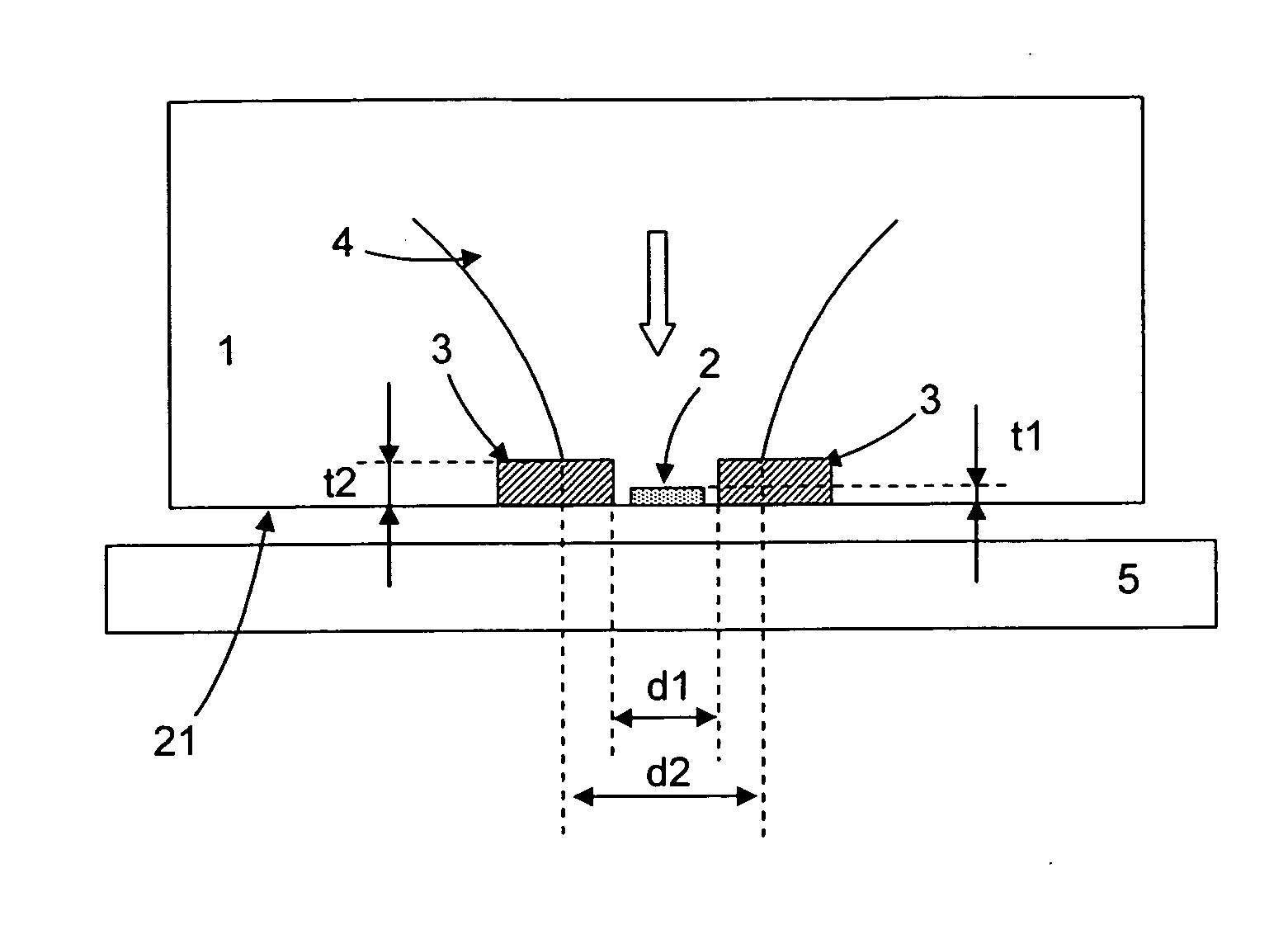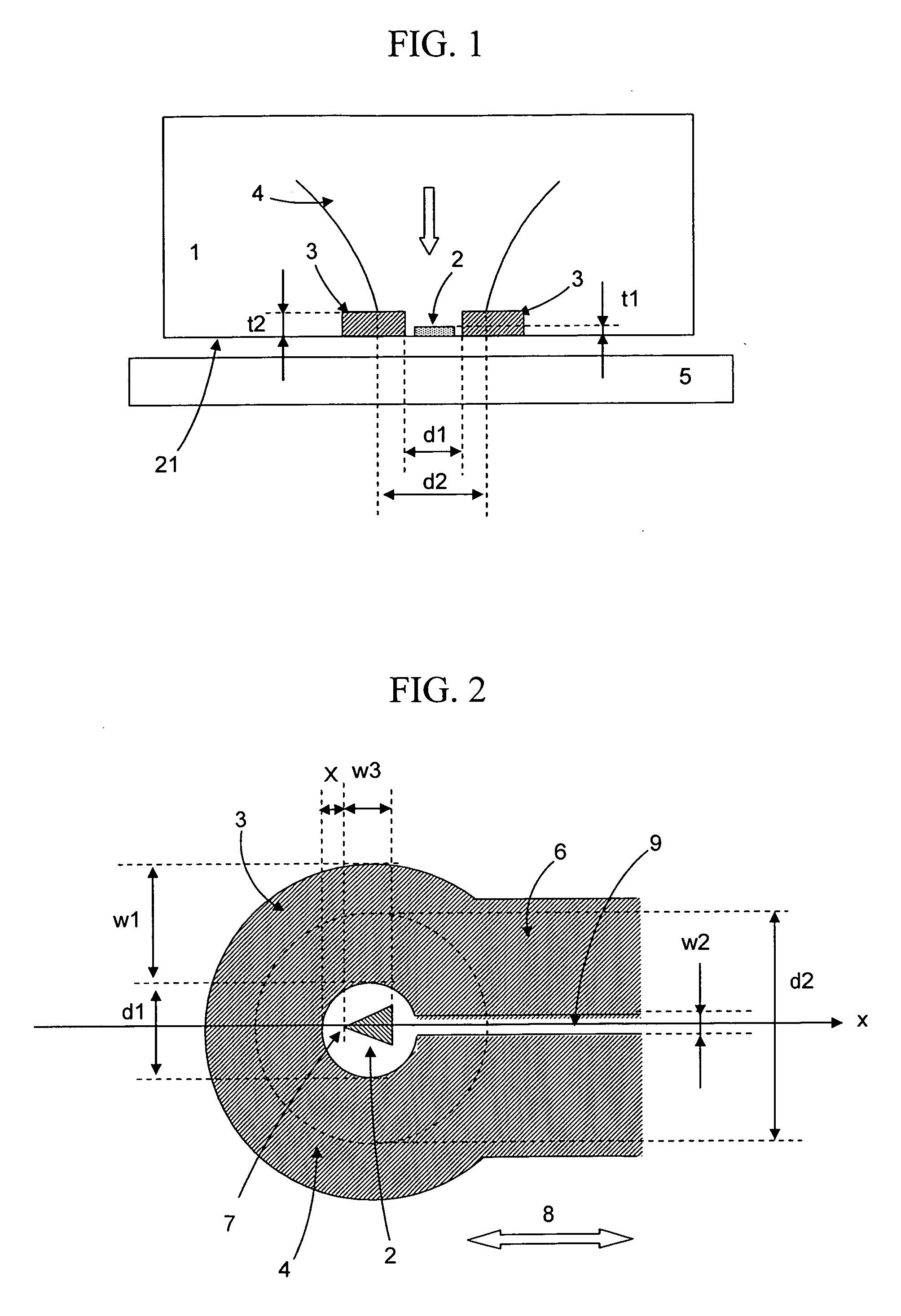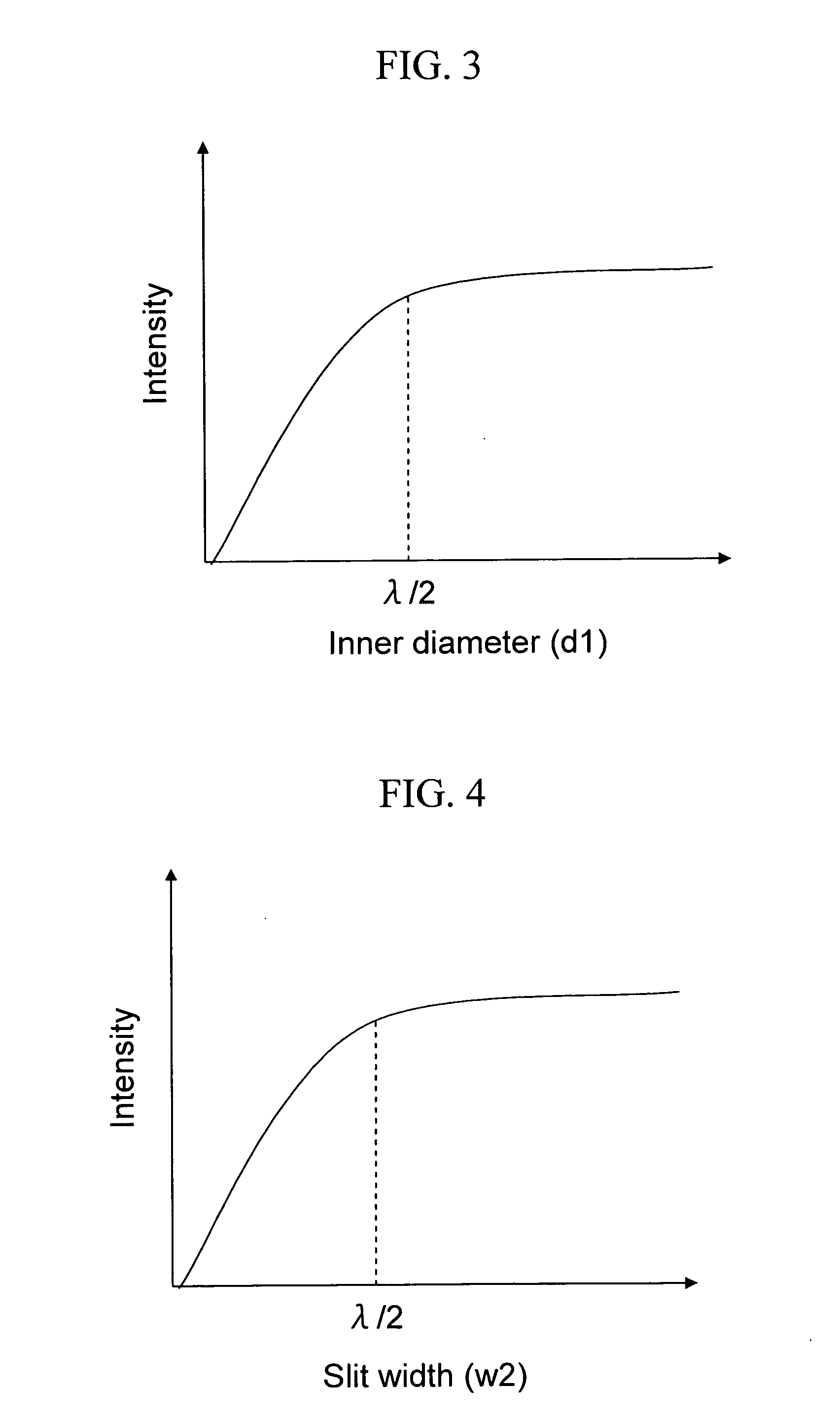Head for thermally assisted magnetic recording device and thermally assisted magnetic recording device
- Summary
- Abstract
- Description
- Claims
- Application Information
AI Technical Summary
Benefits of technology
Problems solved by technology
Method used
Image
Examples
first embodiment
[0044] In a head for a thermally assisted magnetic recording device of the present invention, as shown in FIG. 1, a circular coil 3 is placed on a bottom portion of a slider 1 to be a main body of the head, and a scatterer 2 having conductivity for generating an optical near-field is placed in the center of the coil. Incident light 4 is made incident from an upper side of the coil 3. Here, the upper side means a side which is opposed to a side where a medium 5 is placed. In this case, a width d1 of the inside of the coil 3 is not larger than a spot diameter (d2) of the incident light 4, that is, not larger than the wavelength of the incident light. Accordingly, the background light generated in the circumference of an optical near-field generating element (a scatterer) 2 is eliminated. Here, the width of the inside of the coil means a width of the smallest portion of widths out of spaces opened in the coil center.
[0045] In the present embodiment, the slider 1, whose portion allows ...
second embodiment
[0052] Next, an embodiment in a case where a width of the inside of the coil is varied in an upper side and a lower side will be described. In the above-described configuration, to improve utilization efficiency of light energy, as shown in FIG. 6, a width d3 of the inside of the coil in the upper side of the coil (the side where the light is made incident) is made larger than a width d1 of the inside of the coil in the lower side of the coil (the side where the light goes out). By doing so, a component of the incident light 4, which reflects without entering a hollow portion in the inside of the coil, becomes smaller, so that the light utilization efficiency is improved. In addition, as shown in FIG. 6, when a wall of the inside portion of the coil is tilted, the light irradiating the wall is reflected and concentrated in the center portion, so that energy density of the light incident on the metal scatterer 2 can be increased. That is, the coil 3 can be caused to have functions of...
third embodiment
[0055] Next, an embodiment in a case where the base of the coil is apart from the base of the slider will be described.
[0056] The base of the coil 3 is not necessarily on a level with the base of the slider. As shown in FIG. 8, the coil may be placed so that a distance between the base of the coil 3 and a surface of the medium 5 becomes larger than a distance between an air bearing surface of the slider and the surface of the medium 5. In general, in a vicinity of an edge of a circular aperture, intensified scattered light (localized light) is generated, but similar scattered light is also generated in the vicinity of an edge 14 of the coil 3, which functions as a shading film. When the scattered light is absorbed in the medium, it causes expansion of a heating region. In contrast, as in the case of the above-described configuration, the base of the coil 3 is placed apart from the medium, so that the scattered light generated in the edge 14 becomes difficult to be absorbed in the r...
PUM
 Login to View More
Login to View More Abstract
Description
Claims
Application Information
 Login to View More
Login to View More - R&D
- Intellectual Property
- Life Sciences
- Materials
- Tech Scout
- Unparalleled Data Quality
- Higher Quality Content
- 60% Fewer Hallucinations
Browse by: Latest US Patents, China's latest patents, Technical Efficacy Thesaurus, Application Domain, Technology Topic, Popular Technical Reports.
© 2025 PatSnap. All rights reserved.Legal|Privacy policy|Modern Slavery Act Transparency Statement|Sitemap|About US| Contact US: help@patsnap.com



